Resources
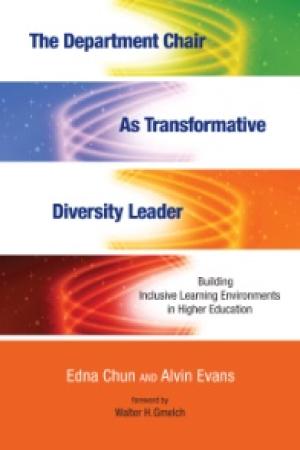
Click Here for Book Review Abstract: With the imminent demographic shifts in our society and the need to prepare students for citizenship in a global, knowledge-based society, the role of the academic department chair in creating diverse and inclusive learning environments is arguably the most pivotal position in higher education today. In the United States, increasing minority student enrollment coupled with the emergence of a minority majority American nation by 2042 demands that academic institutions be responsive to these changing demographics. The isolation of the ivory tower is no longer an option. This is the first book to address the role of the department chair in diversity and addresses an unmet need by providing a research-based, systematic approach to diversity leadership in the academic department based upon survey findings and in-person interviews. The department chair represents the nexus between the faculty and the administration and is positioned uniquely to impact diversity progress. Research indicates that more than 80 percent of academic decisions regarding appointment, curriculum, tenure and promotion, classroom pedagogy, and student outcomes are made by the department chair in consultation with the faculty. This book examines the multidimensional contributions that chairs make in advancing diversity within their departments and institutions in the representation of diverse faculty and staff; in tenure and promotion; curricular change; student learning outcomes; and departmental climate. The scope and content of the book is not limited to institutions in the United States but is applicable to academic institutions globally in their efforts to address the access and success of increasingly diverse student populations. It addresses institutional power structures and the role of the dean in relation to the appointment of chairs and their impact on the success of chairs from non-dominant groups, including female, minority, and lesbian/gay/transgendered individuals who serve in predominantly white male departments. Using qualitative and quantitative research methods, the book analyzes predominant structural and behavioral barriers that can impede diversity progress within the academic department. It then focuses upon the opportunities and challenges chairs face in their collaborative journey with faculty and administration toward inclusive departmental and institutional practices. Each chapter provides concrete strategies that chairs can use to strengthen diversity in the academic department. Addressed to department chairs, deans, faculty, and administrative leaders in higher education in all Western societies facing demographic change and global challenges, this book offers a critical road map to creating the successful academic institutions that will meet the needs of our changing populations. (From the Publisher)
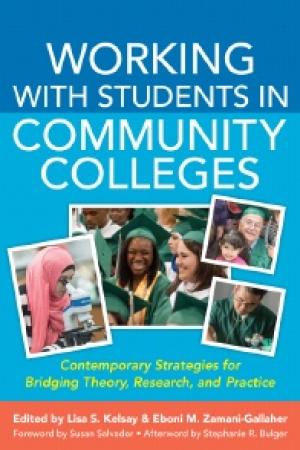
Click Here for Book Review Abstract: This timely volume addresses the urgent need for new strategies and better ways to serve community colleges’ present and future students at a time of rapid diversification, not just racially and ethnically, but including such groups as the undocumented, international students, older adult learners and veterans, all of whom come with varied levels of academic and technical skills. The contributing researchers, higher education faculty, college presidents, and community college administrators provide thorough understanding of student groups who have received scant attention in the higher education literature. They address the often unconscious barriers to access our institutions have erected and describe emerging strategies, frameworks, and pilot projects that can ease students’ transition into college and through the maze of the college experience to completion. They offer advice on organizational culture, on defining institutional outcomes, on aligning shifting demographics with the multiple missions of the community college, on strengthening the collaboration of student and academic affairs to leverage their respective roles and resources, and on engaging with the opportunities afforded by technology. Divided into three parts – understanding today’s community college campuses; supporting today’s community college learners; and specialized populations and communities – this book offers a vision and solutions that should inform the work of faculty, administrators, presidents, and board members. (From the Publisher)
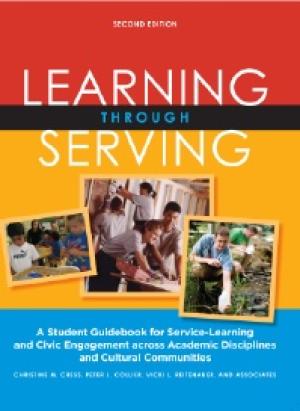
Click Here for Book Review Abstract: This substantially expanded new edition of this widely-used and acclaimed text maintains the objectives and tenets of the first. It is designed to help students understand and reflect on their community service experiences both as individuals and as citizens of communities in need of their compassionate expertise. It is designed to assist faculty in facilitating student development of compassionate expertise through the context of service in applying disciplinary knowledge to community issues and challenges. In sum, the book is about how to make academic sense of civic service in preparing for roles as future citizen leaders. Each chapter has been developed to be read and reviewed, in sequence, over the term of a service-learning course. Students in a semester course might read just one chapter each week, while those in a quarter-term course might need to read one to two chapters per week. The chapters are intentionally short, averaging 8 to 14 pages, so they do not interfere with other course content reading. This edition presents four new chapters on Mentoring, Leadership, Becoming a Change Agent, and Short-Term Immersive and Global Service-Learning experiences. The authors have also revised the original chapters to more fully address issues of social justice, privilege/power, diversity, intercultural communication, and technology; have added more disciplinary examples; incorporated additional academic content for understanding service-learning issues (e.g., attribution theory); and cover issues related to students with disabilities, and international students. This text is a student-friendly, self-directed guide to service-learning that: • Develops the skills needed to succeed • Clearly links service-learning to the learning goals of the course • Combines self-study and peer-study workbook formats with activities that can be incorporated in class, to give teachers maximum flexibility in structuring their service-learning courses • Promotes independent and collaborative learning • Equally suitable for courses of a few weeks’ or a few months’ duration • Shows students how to assess progress and communicate end-results • Written for students participating in service learning as a class, but also suitable for students working individually on a project. (From the Publisher)

Racial Battle Fatigue is described as the physical and psychological toll taken due to constant and unceasing discrimination, microagressions, and stereotype threat. The literature notes that individuals who work in environments with chronic exposure to discrimination and microaggressions are more likely to suffer from forms of generalized anxiety manifested by both physical and emotional syptoms. This edited volume looks at RBF from the perspectives of graduate students, middle level academics, and chief diversity officers at major institutions of learning. RBF takes up William A. Smith’s idea and extends it as a means of understanding how the “academy” or higher education operates. Through microagressions, stereotype threat, underfunding and defunding of initiatives/offices, expansive commitments to diversity related strategic plans with restrictive power and action, and departmental climates of exclusivity and inequity; diversity workers (faculty, staff, and administration of color along with white allies in like positions) find themselves in a badlands where identity difference is used to promote institutional values while at the same time creating unimaginable work spaces for these workers. (From the Publisher)

Help! My College Students Can’t Read: Teaching Vital Reading Strategies in the Content Areas is designed as a resource guide for content area instructors who have no specific training in the field of literacy but want to help the struggling readers in their classrooms. This book provides simple, step-by-step ideas for introducing and embedding reading strategies within all content areas without sacrificing a lot of valuable class time. This easy-to-use resource will equip instructors to not only help their students be stronger readers in general, but to be stronger readers of content-area academic texts. (From the Publisher)
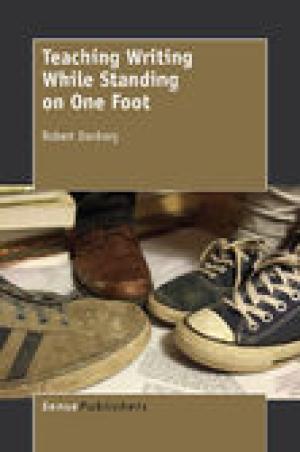
Click Here for Book Review Abstract: Written in a tradition that encourages teachers to see classrooms as laboratories and themselves as artists, intellectuals and researchers, Teaching Writing While Standing on One Foot is a compelling work that will enthrall readers as well as give them knowledge, hope, and inspiration. Written from the perspective of a writer, teacher, father, home cook and learner growing up with a learning disability, Teaching Writing While Standing on One Foot combines essays, poems, recipes, legends, teaching tips and stories to explore the question “How do we teach what we can only learn for ourselves?” Prompts woven throughout the book invite readers to write the stories of their own lives. (From the Publisher)
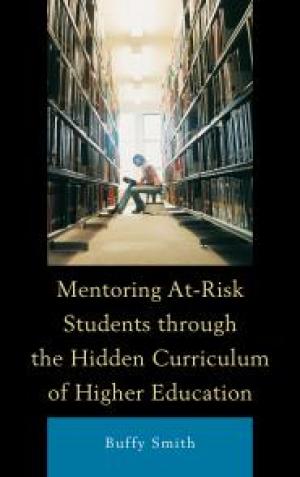
Click Here for Book Review Abstract: Mentoring At-Risk Students through the Hidden Curriculum of Higher Education reveals how the institutional culture and social networks of universities influence the academic success of underrepresented students. This book is based on a qualitative study that integrates a sociological and higher education theoretical framework to examine the impact of mentoring programs on students’ acquisition of institutional cultural capital and social capital during their college experience. This book offers an innovative mentoring model that illuminates how students can navigate the hidden curriculum of higher education. In addition, the book provides practical strategies on how to avoid academic mine fields in order to thrive in college. This book is written for administrators, faculty, student affairs professionals and students to promote retention, academic success, and create a more transparent, inclusive, and equitable higher education system. (From the Publisher)
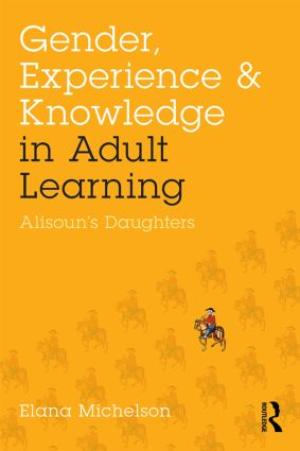
Click Here for Book Review Abstract: In this wide-ranging book, Elana Michelson invites us to revisit basic understandings of the 'experiential learner'. How does experience come to be seen as the basis of knowledge? How do gender, class, and race enter into the ways in which knowledge is valued? What political and cultural belief systems underlie such practices as the assessment of prior learning and the writing of life narratives? Drawing on a range of disciplines, from feminist theory and the politics of knowledge to literary criticism, Michelson argues that particular understandings of `experiential learning’ have been central to modern Western cultures and the power relationships that underlie them. Presented in four parts, this challenging and lively book asks educators of adults to think in new ways about their assumptions, theories, and practices: - Part I provides readers with a short history of the notion of experiential learning. - Part II brings the insights and concerns of feminist theory to bear on mainstream theories of experiential learning. - Part III examines the assessment of prior experiential learning for academic credit and/or professional credentials. - Part IV addresses a second pedagogical practice that is ubiquitous in adult learning, namely, the assigning of life narratives. Gender, Experience, and Knowledge in Adult Learning will be of value to scholars and graduate students exploring adult and experiential learning, as well as academics wishing to introduce students to a broad range of feminist, critical-race, materialist and postmodernist thinking in the field. (From the Publisher)
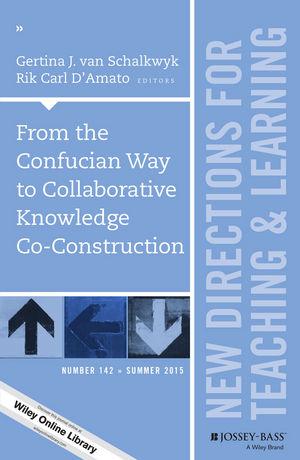
Click Here for Book Review Abstract: Sharing and engaging in interactions and discussion as required for collaborative teaching and learning can be a foreign concept to students coming from Asia or growing up in an Asian family. As such, this first volume in a two-volume edition helps lecturers, educators, and teachers create collaborative teaching and learning experiences with multicultural adult learners in higher education. Topics include: - assessment and evaluation techniques that focus on collaborative teaching and learning with diverse students - students’ cultural beliefs and strategies for outcomes-based collaborative teaching and learning in Asia, and - an understanding of the unique learning motivations of contemporary Asian students. This is the 142nd volume of this Jossey-Bass higher education series. It offers a comprehensive range of ideas and techniques for improving college teaching based on the experience of seasoned instructors and the latest findings of educational and psychological researchers. (From the Publisher)
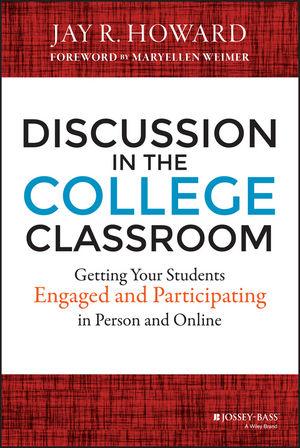
Click Here for Book Review Abstract: Second only to lecture as the most widely used instructional strategy, there's no better method than classroom discussion to actively engage students with course material. Most faculty are not aware that there is an extensive body of research on the topic from which instructors can learn to facilitate exceptional classroom discussion. Discussion in the College Classroom is a practical guide which utilizes that research, frames it sociologically, and offers advice, along with a wide variety of strategies, to help you spark a relevant conversation and steer it toward specific learning goals. Applicable across a spectrum of academic disciplines both online and on campus, these ideas will help you overcome the practical challenges and norms that can undermine discussion, and foster a new atmosphere of collaborative learning and critical thinking. Higher education faculty are increasingly expected to be more intentional and reflective in their pedagogical practice, and this guide shows you how to meet those expectations, improve student outcomes, and tackle the perennial problem of lagging engagement. Thoroughly grounded in the scholarship of teaching and learning, this book gives you concrete guidance on integrating discussion into your courses. You'll learn to: - Overcome the challenges that inhibit effective discussion - Develop classroom norms that facilitate discussion - Keep discussion focused, relevant, and productive - Maximize the utility of online student discussions The kind of discussion that improves learning rarely arises spontaneously. Like any pedagogical technique, careful planning and smart strategy are the keys to keeping students focused, engaged, and invested in the conversation. Discussion in the College Classroom helps you keep the discussion applicable to the material at hand while serving learning goals. (From the Publisher)